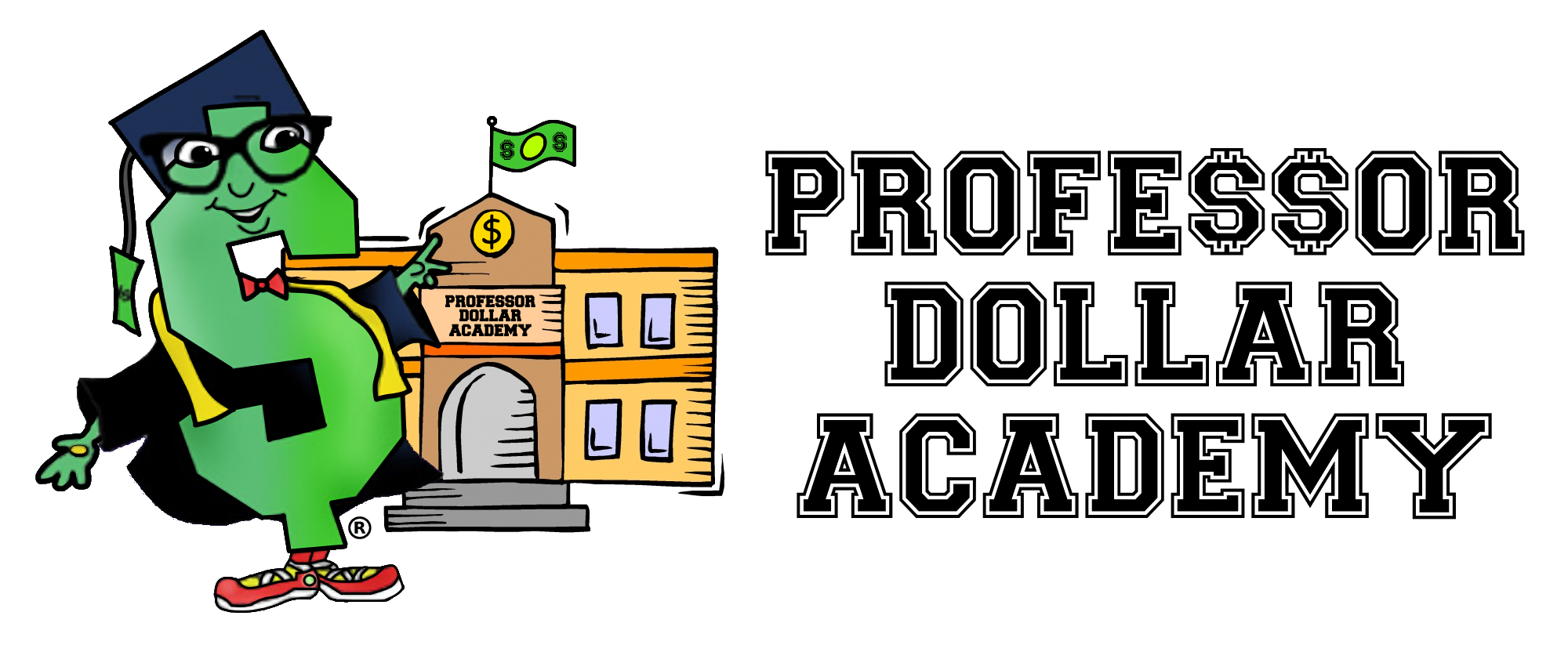Minors 2 Millionaires offers several classes to give students a headstart and begin building wealth. These include “Entrepreneur Head$tart” and “Business Head$tart” in our Young CEO program. Additional courses are available for the “Working Teenager” and those who are “Living on Your Own.”
FINANCIAL EDUCATION
FINANCIAL EDUCATION

EDUCATIONAL PROGRAMS
Our educational programs are two or four-hour seminars, one or two-day workshops, week-long camps or weekly lessons. Classes are available for Pre-K, Elementary, Middle School, High School and young adults.
Profe$$or Dollar Academy
Money Curriculum
Overview:
At the end of 2018, the average U.S. household owed $6,741 on credit cards, $27,630 on auto loans and $47,634 on student loans. Many owed much more. The median American household had only $11,700 in savings with many households having no savings at all.
Advertising targets children in ever increasing levels. Elementary school children influence about $15 billion in spending every year with $1.1 billion spent on food, beverages, clothes, toys and games. Teenagers spend $57 billion of their own money annually and $36 billion of their family’s money.
Profe$$or Dollar Academy’s Money Curriculum can improve the economic and financial literacy of your children.
Each lesson strengthens the child’s understanding of personal financial management. Children receive the necessary tools to develop the life skills they need to become financially responsible and savvy consumers, be good money managers and learn the value of money. Classes include vocabulary words and fun quizzes to solidify the student’s learning.
The Profe$$or Dollar Academy Money Curriculum includes activities and assignments relating to children’s everyday experiences. All actions integrate finances with other subjects learned in the classroom, and group discussions help students become aware of the importance of being an educated consumer and developing good money management habits.

Lesson One: Let’s Talk Money!
Beginning with history, this lesson explores what money is, where it came from and what is does. Students also learn about the Federal Reserve System and incorporate geography to locate their hometowns and the nearest Federal Reserve bank. Following the lesson, students talk with their parents or grandparents to see how prices have changed since they were the student’s age.

Lesson Two: Where’s the Money? (Banking)
This lesson discusses banks and credit unions, what they do and the services they offer such as checking accounts, savings accounts and loans. Students compare financial institutions to compare fees, interest, types of accounts and other programs offered. The lesson concludes with a field trip to a local bank.

Lesson Three: Advertising for Your Money
Helping students become aware of advertising’s subtle influences can make them informed consumers and avoid rash purchases because they saw something on television. This chapter answers the questions how does advertising influence spending, what are the different techniques of advertising and what is impulse buying?

Lesson Four: Using Other People’s Money (Credit)
Is credit a tool or a trap? This lesson explores the advantages and disadvantages of borrowing, different kinds of debt, where to borrow and how to pay back what you’ve borrowed. Other subjects include the various methods for paying off credit card debt and calculating how much one pays when adding interest to the cost of the item.

Lesson Five: Money Management
To help students manage their money, this chapter helps them determine if they are spenders or savers. Once they know their money personality, they learn techniques of saving, delaying gratification and comparison shopping techniques.

Lesson Six: Budgeting My Money
The easiest way to control spending is by following a budget or spending plan. This lesson helps students differentiate between wants and goals, create a budget, and understand how using one can help them reach their spending and saving goals.

Lesson Seven: Working to Earn Money
The way most people obtain money is by working. This chapter discusses what work is, what work the student might be interesting in pursuing, different kinds of jobs, salary differences between jobs and educational requirements to get hired


